Review the following Unit tests used to demonstrate how to group by periods/intervals.
[TestClass]
public class GroupByDateIntervalsTests {
[TestMethod]
public void Group_By_5_year_Intervals_Max_30() {
var employees = GenerateRandomDates(DateTime.Now, 5, 40, 50).Select((d, i) => new { id = i, StartDate = d });
var now = DateTime.Today;
var period = 5;
var maxPeriod = 30;
var groups = from employee in employees
let interval = DateTime.MinValue.AddDays((now - employee.StartDate).TotalDays).Year / period
group employee by Math.Min(interval * period, maxPeriod) into g
orderby g.Key
select new {
period = g.Key,
employees = g.Select(e => e.id).ToArray()
};
var result = groups.ToList();
}
[TestMethod]
public void Group_By_Random_Interval_Max_30() {
var employees = GenerateRandomDates(DateTime.Now, 5, 40, 50).Select((d, i) => new { id = i, StartDate = d });
var now = DateTime.Today;
var periods = new[] { 5, 10, 20, 30 };
var groups = employees
.GroupBy(employee => {
var period = DateTime.MinValue.AddDays((now - employee.StartDate).TotalDays).Year;
var interval = periods.Where(p => (period / p) > 0).Max();
return Math.Min(interval, periods.Max());
})
.Select(g => new {
period = g.Key,
employees = g.Select(e => e.id).ToArray()
});
var result = groups.ToList();
}
public List<DateTime> GenerateRandomDates(DateTime rootDate, int minAgeAtRootDate, int maxAgeAtRootDate, int count) {
Contract.Assert(minAgeAtRootDate <= maxAgeAtRootDate, "invalid age range. Minimum age cannot be higher than maximum age");
var minDate = rootDate.Date.AddYears(-maxAgeAtRootDate);
var maxDate = rootDate.Date.AddYears(-minAgeAtRootDate);
var range = (maxDate - minDate).Days;
if (range == 0) {
range = 364;
}
var random = new Random();
var dates = Enumerable
.Range(1, count)
.Select(i => minDate.AddDays(random.Next(range)))
.ToList();
return dates;
}
}
